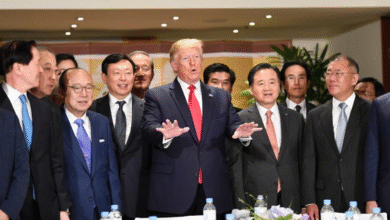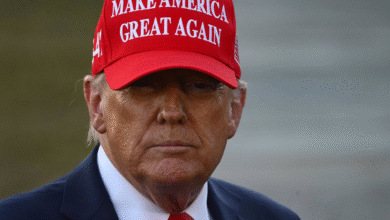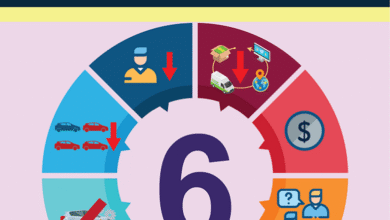Religious Charter School: Supreme Court’s 4-4 Deadlock Explained
The recent Supreme Court deadlock regarding the proposed religious charter school in Oklahoma has sparked fervent debate over the intersection of education and faith. This landmark case highlights the ongoing struggle between the First Amendment’s Establishment Clause, which advocates for a strict separation of church and state, and the burgeoning school choice movement that promotes religious educational options. Advocates for the nation’s first religious charter school, St. Isidore of Seville Catholic Virtual School, aimed to provide online education while incorporating Catholic values, raising questions about taxpayer-funded programs. The Supreme Court’s 4-4 tie means that, for now, the Oklahoma Supreme Court’s ruling stands, preventing the school from moving forward. As legal challenges surrounding the rights of religious institutions continue to unfold, the implications of this case are likely to resonate through future Supreme Court decisions and further discussions on educational reform.
In light of the recent Supreme Court decision, the conversation surrounding faith-based educational institutions has intensified. The events surrounding Oklahoma’s attempted launch of a nontraditional public academic establishment shed light on the broader implications for religious schooling opportunities in America. With the school choice initiative gaining momentum, many parents are seeking diverse options for their children’s education, including those that align with specific religious beliefs. This dialogue underscores the complexity of the First Amendment—balancing religious expression against the imperative to maintain a secular educational environment. As debates continue, stakeholders in both the advocacy for religious charter schools and public education will need to navigate these intricate legal landscapes and societal expectations.
Supreme Court Decision Impacting Religious Charter Schools
The recent 4-4 deadlock in the Supreme Court regarding the nation’s first religious charter school in Oklahoma highlights the complex and contentious interplay between religion and state education. This decision stems from the Oklahoma Supreme Court’s ruling that the proposed St. Isidore of Seville Catholic Virtual School violated both the federal Constitution and state law, particularly emphasizing the principle of separation of church and state. As the Court failed to establish a clear majority opinion, it leaves many questions unanswered about how future cases involving religious charter schools may be handled, particularly those seeking taxpayer funding.
This ruling not only impacts the immediate ability of St. Isidore to launch but also sends ripples through the larger school choice movement. Supporters of religious charter schools argue that denying these opportunities restricts parents’ choices and violates the Free Exercise Clause of the First Amendment. However, opponents caution that public funding for religious education undermines the Establishment Clause, which seeks to prevent government endorsement of any religion. This deadlock further complicates the national dialogue surrounding school choice, emphasizing the importance of legislative clarity in future educational policy.
Exploring the Separation of Church and State in Education
The principle of separation of church and state remains a cornerstone of American jurisprudence, particularly when it comes to education. The Supreme Court’s recent decision to deadlock on the Oklahoma religious charter school case underlines this fundamental issue. Advocates for religious charter schools argue that the Free Exercise Clause should extend to allow for state funding of private, faith-based education. However, critics argue this would erode the very fabric of the Establishment Clause, which is designed to ensure that government remains neutral in religious matters.
In the case of St. Isidore of Seville, the distinction between a charter school and a traditional religious institution becomes blurred. The Oklahoma Supreme Court’s concern was driven by the idea that such a school would inevitably lead to state endorsement of the Catholic faith. This ongoing debate beckons further scrutiny, as various legal interpretations of the First Amendment continue to evolve, potentially impacting future rulings concerning school funding and religious education across the nation.
The Role of the School Choice Movement
The school choice movement has gained momentum in recent years, advocating for a system where parents have the authority to choose educational options, including private and religious schools, funded by taxpayer dollars. Proponents argue that this movement fosters competition and innovation in education, allowing families to seek the best fit for their children’s needs. However, the implications of funding religious charter schools, such as St. Isidore, complicate this narrative, as it intertwines issues of educational freedom with constitutional interpretations.
On the other hand, opponents of the school choice movement raise valid concerns about the consequences for traditional public schools. Many argue that diverting funds to religious charter schools undermines the public education system’s sustainability and resource allocation. As the Supreme Court prepares to revisit related issues, the intersection between the school choice movement and constitutional principles ensures this debate will remain vibrant and contentious within educational policy discussions.
Future of Religious Charter Schools in America
As the landscape of education continues to evolve, the future of religious charter schools hangs in the balance, particularly in light of recent Supreme Court decisions. With the court’s 4-4 deadlock exemplifying the lack of consensus on the matter, stakeholders in religious charter schools are left grappling with uncertainty. While advocates remain hopeful, the ruling by Oklahoma’s highest court serves as a cautionary tale, illustrating the potential challenges ahead in securing public funding for religiously-affiliated educational institutions.
The implications of this decision may resonate beyond Oklahoma, potentially impacting other states considering similar initiatives. With a conservative majority often favoring religious liberties, future cases could still uphold the establishment of religious charter schools if framed within the context of the Free Exercise Clause. As debates continue, the delicate balance between church and state in public education must be navigated carefully to respect both religious freedom and the principles enshrined in the Constitution.
Legal Precedents for Faith-Based Education
Legal precedents surrounding faith-based education are increasingly significant as more states consider the establishment of religious charter schools. The Supreme Court has been indirectly shaping this landscape through various rulings, particularly those protecting religious entities from discrimination in public funding. The recent case in Oklahoma reflects how judges navigate a landscape filled with First Amendment concerns, balancing the Establishment Clause against the Free Exercise Clause.
Historically, courts have been hesitant to allow state funding for religious education, primarily due to fears of violating the separation of church and state. However, with the recent rise of advocacy for religious schooling within the school choice movement, there is a growing body of legal arguments pushing for a reversal of these precedents. As discussions around the future of America’s educational system evolve, the outcomes of such cases will likely redefine the boundaries of public education and the right to religious expression.
Supreme Court Dynamics and Their Influence on Education Policy
The dynamics within the Supreme Court play a crucial role in shaping education policy, especially as it pertains to controversial issues like religious charter schools. The recent deadlock was exacerbated by the absence of Justice Amy Coney Barrett, a pivotal vote who may have leaned toward supporting the school’s establishment. This absence underscores the impact individual justices can have on pivotal cases, highlighting how judicial composition can directly influence educational opportunities across the nation.
As ideological divides grow within the Court, future cases about the intersection of education and religion will likely receive heightened scrutiny. Conservative justices have shown willingness to support interpretations of the First Amendment that favor religious freedom, often at odds with the liberal justices’ strict adherence to separation principles. How these dynamics unfold will be critical in determining whether religious charter schools will flourish or face sustained opposition at the judicial level.
Public Opinion and Religious Charter Schools
Public opinion plays a significant role in the ongoing debate about religious charter schools and their place in the education system. Polls indicate a growing acceptance of school choice initiatives among parents, particularly those seeking alternatives to traditional public education. This rise in support could push lawmakers to consider options that include religious charter schools, appealing to constituents who view educational choice as a fundamental right.
However, public opinion is not monolithic, and dissenting voices remain strong, particularly among educators and proponents of secular public education. Concerns over the implications of diverting taxpayer funds to religious institutions often generate fierce debates. As political leaders weigh the benefits and drawbacks of expanding school choice options, including religious charter schools, the public discourse will undoubtedly influence legislative actions in the near future.
Future Legal Challenges for Oklahoma Charter School
With the recent Supreme Court deadlock, future legal challenges are anticipated for the proposed Oklahoma charter school that aims to promote Catholic education. Legal experts predict that the Court will eventually address the contentious issue of whether states can prohibit religious institutions from participating in state-funded education programs. This could open the door for a wave of challenges across the country, potentially reshaping the legal environment surrounding religious charter schools.
The outcome of such future legal battles will hinge on interpretations of the First Amendment, particularly regarding the balance between the Free Exercise Clause and the Establishment Clause. As organizations advocating for religious education rally for detailed legal scrutiny, it is essential for policymakers to understand the ramifications of any judicial interpretations that may arise. The proposed St. Isidore school may serve as a test case, setting significant precedents for similar initiatives in other states.
Conclusion: The Path Ahead for Religious Charter Schools
In conclusion, the path ahead for religious charter schools remains fraught with challenges as highlighted by the Supreme Court’s recent decision. The onus now lies on key stakeholders, including parents, advocacy groups, and lawmakers, to navigate the complex interplay of legal principles and public sentiment surrounding this issue. Ongoing discussions about the integration of religious education within the public school framework will undoubtedly persist as educational paradigms evolve.
As courts across the nation wrestle with these fundamental questions of freedom and restriction, the future of religious charter schools hinges on forthcoming legal battles and how effectively advocacy groups can galvanize public support. Whether Oklahoma’s experience becomes a model for others or a cautionary tale will set a significant precedent in the larger national discourse on school choice and religious education.
Frequently Asked Questions
What is the significance of the Supreme Court’s deadlock on the religious charter school case in Oklahoma?
The Supreme Court’s 4-4 deadlock on the nation’s first religious charter school case, involving St. Isidore of Seville Catholic Virtual School, signifies the ongoing tensions between the First Amendment’s Establishment Clause and Free Exercise Clause, as well as the complex debate over the separation of church and state in education.
How does the First Amendment impact the establishment of religious charter schools?
The First Amendment plays a critical role in the establishment of religious charter schools. The Establishment Clause restricts state endorsement of religion, while the Free Exercise Clause protects religious practices. This balancing act is pivotal in determining whether religious charter schools, like the proposed St. Isidore in Oklahoma, can receive public funding.
What was the outcome for the Oklahoma charter school proposal by the Roman Catholic Archdiocese?
The Oklahoma Supreme Court ruled that the proposal for the St. Isidore of Seville Catholic Virtual School violated both federal and state law, preventing Oklahoma from launching the first religious charter school after the Supreme Court’s 4-4 deadlock upheld this decision.
How does the school choice movement relate to religious charter schools?
The school choice movement advocates for using taxpayer funds to allow parents to choose private and charter schools for their children. This movement often intersects with efforts to establish religious charter schools, as seen in the case of St. Isidore, which aims to expand educational options while raising concerns about the potential violation of the separation of church and state.
What concerns did the Oklahoma Supreme Court highlight regarding the St. Isidore religious charter school proposal?
The Oklahoma Supreme Court emphasized concerns about the Establishment Clause, stating that the religious identity of the proposed St. Isidore school could foster state endorsement of a particular religion, thus violating the principle of separation of church and state mandated by the Constitution.
What are the implications of the Supreme Court’s refusal to provide a ruling on religious charter schools?
The Supreme Court’s refusal to issue a written opinion on the religious charter school case leaves the legal status of religious schools in taxpayer-funded programs ambiguous, allowing lower courts to continue navigating the complex legal landscape between the First Amendment’s clauses regarding religion.
What role did Justice Amy Coney Barrett’s absence play in the Supreme Court’s decision?
Justice Amy Coney Barrett’s absence contributed to the 4-4 deadlock in the Supreme Court, as her conservative perspective was seen as potentially pivotal in determining the outcome of whether religious charter schools like St. Isidore could operate within a public funding framework.
How have recent court rulings influenced the debate on religious charter schools?
Recent court rulings have leaned towards protecting the Free Exercise Clause, allowing for a broader interpretation that permits religious groups to access programs for which they would otherwise be excluded, which influences ongoing debates about the establishment and funding of religious charter schools.
| Key Point | Details |
|---|---|
| Supreme Court Decision | The Supreme Court deadlocked 4-4, leaving the Oklahoma Supreme Court’s ruling intact, which prohibits the establishment of the St. Isidore of Seville Catholic Virtual School. |
| Legal Implications | This case highlights conflicts between the Establishment Clause and the Free Exercise Clause of the First Amendment, though it does not set a national precedent. |
| Absence of Justice Barrett | Justice Amy Coney Barrett’s absence was pivotal, as her vote may have influenced the outcome given her conservative stance. |
| State Board Approval and Lawsuit | In June 2023, the state board approved the school despite religious identity concerns, leading to legal action by the Oklahoma Attorney General. |
| Political Context | There are divisions even among Republicans in Oklahoma regarding the initiative, with the Attorney General opposing it. |
| Ongoing Legal Tensions | This case indicates that the issue of religious involvement in public education will continue to be contested in future court cases. |
Summary
The Supreme Court’s recent decision regarding the nation’s first religious charter school underscores the ongoing legal and societal debates surrounding religious involvement in public education. The implications of this ruling for religious charter schools, such as St. Isidore, reflect broader tensions over the interpretation of the First Amendment. With further cases expected to arise, the topic of religious charter schools will remain a significant focus in the discourse on education reform and religious rights.




